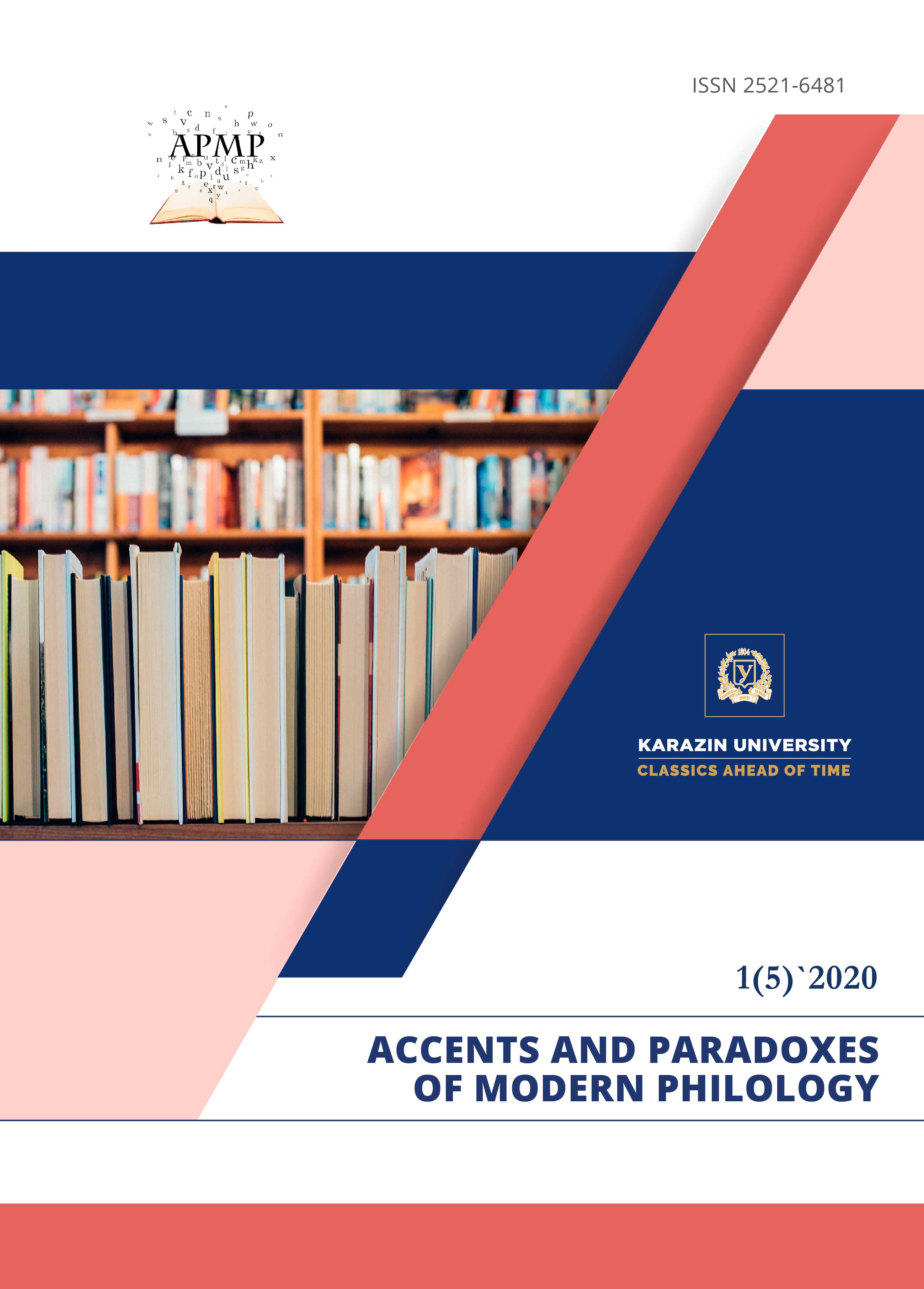RUSSIAN SOLDIERS AND OFFICERS SEEN BY THE FRENCH WITNESSES OF THE CRIMEAN WAR (1853-1856) IN THE NOVEL BY L. BOUSSENARD "LE ZOUAVE DE MALAKOFF" (LINGUOIMAGOLOGICAL ASPECT)
Abstract
The article deals with the means of linguoimagological verbalization. Linguoimagology is a new trend in philology. The term was introduced by L. Ivanova. The author of the article analyzed the features of the linguistic perception’s interpretation of the Russian officers and soldiers by the French witnesses during the Russo-Turkish War which started in 1853 and finished in 1856. We have selected for the analysis "Le Zouave de Malakoff" – the novel by L. Boussenard. The book describes the military activities on the peninsula. It should be underlined that this work has never been translated from French into the Ukrainian language and is a rare volume even in the motherland.
The author pays great attention to the description of fighting of the Russian troops. L. Boussenard evaluates the war activities in the Crimean War and everyone has a good chance to see them with the eyes of a French person. It looks, as if he or she paricipates in the described campaign.
This novel fully depicted the events of the mid-nineteenth century which happened on the Crimean peninsula where the British, French, Russian, Sardinian, and Turkish armies fought. In the article various discourses were considered. The volume of the work let us deal only with the military activities associated with the soldiers and officers of the Russian army from the point of view of the French participants. We came to such an assumption that besides the positive attitude to the enemies, L. Boussenard also had ironic assessment of them and of the activities conducted by the people.
Thus, it should be concluded that, the view of the Russians by the French is presented ambivalently in the linguoimagological aspect. The writer gives characteristics which have positive connotations, together with those which contain negative ones in their semantics. The author used repetitions, alliteration, hyperbole, comparison, short sentences, and metaphor. Generally speaking, the descriptions of the attacks and retreats of the armies are rendered in the present tenses. With the help of this stylistic detail, the narrator reveals the features of the battles, the nature of the involved armies more colorfully.
Downloads
References
Apresyan, Yu. (1995). The image of a person according to the language: an attempt to describe the system. Voprosy yazykoznaniya, №1. 37–67 [in Russian].
Chesnokov, P. (1984). Logical and semantic forms of thinking as the meaning of grammatical forms. Voprosyi yazyikoznaniya. № 5. S. 3–13 [in Russian].
Gertsen, A. (1988). Sochineniya v 4 t. T. 3. Past and thoughts. Chasti 6-8. Moskva: Pravda, 560 s [in Russian].
Gumboldt, V. fon. (1984). Selected Works on Linguistics. Moskva: Progress, 397 [in Russian].
Holubovska, I. (2004). Ethnic features of linguistic pictures of the world. Kyiv: Lohos, 284 [in Ukrainian].
Ivanova, L. (2012). Imagology as a new direction in linguistics. Mova і kultura (Naukoviy zhurnal). Kiev: Izdatelskiy Dom Dmitriya Burago, 73–76 [in Russian].
Ivanova, L. (2014). Reception of France in the linguoimagological aspect. Mova і kultura (Naukoviy zhurnal). Kiev: Izdatelskiy Dom Dmitriya Burago, 91–100 [in Russian].
Ivanova, L. (2015). Synthesis of science – architecture – religion as a subject of linguoimagological description (based on the material of journalism by N.V. Gogol). Mir russkogo slova № 1. Spb., 52–57 [in Russian].
Ivanova, L. (2016). Russian Berlin in the linguoimagological aspect. Kiev: Izdatel'skij dom Dmitriya Burago, 112 [in Russian].
Ishchenko, N. (2008). Mythmaking in Military Discourse: The National Myth of the Crimean War of 1853-1856 in the British Literature in the Second Half of the Nineteenth Century: dys. d-ra fil. nauk: 10.02.04 / Tavr. Nats. un-t im. V. I. Vernadskoho. Simferopol, 426 s. [in Ukrainian] [in Russian].
Karaulov, Yu. (1987). The Russian language and linguistic personality. Moskva: Nauka, 262 s [in Russian].
Kornilov, O. (1999). Linguistic pictures of the world as derivatives of national mentality. Moskva: Izd-vo MGU. 341 s. [in Russian].
Miloslavskaya, S. (2012). Russian as a foreign language in the history of the formation of the European image of Russia: monografiya / 2-e izd., stereotip. Moskva: FLINTA: Nauka, 400 [in Russian].
Orekhov, V. (2006). Russian literature and national image (imagological discourse in the Russian-French literary dialogue). Simferopol: AntikvA, 608 [in Russian].
Orekhov, V. (2008). The myth of Russia in the French literature of the first half of the nineteenth century. Simferopol: OAO Simferopolskaya gorodskaya tipografiya, 200 [in Russian].
Sabitova, Z. (2014). Linguistic picture of the world: linguistic evidence of the people living in nature. Moskva: FLINTA: Nauka, 370–380 s. [in Russian].
Sepir, E. (2002). Selected Works on Linguistics and Cultural Studies. Moskva: Progress, 656 s. [in Russian].
Siari, Zh., Shervashidze, V. (2013). The image of Napoleon in France. Slovo.ru: Baltiyskiy aktsent. Tom 4, №1. S. 35-46 [in Russian].
Teliya, V. (1988). Metaphor as a model of meaning production and its expressive-evaluative function. Metafora v yazyike i tekste. Moskva: Nauka, S. 26 – 52 [in Russian].
Vezhbitskaya, A. (1996). Language. Culture. Cognition. Moskva: Yazyiki russkoy kulturyi, 348 s. [in Russian].




